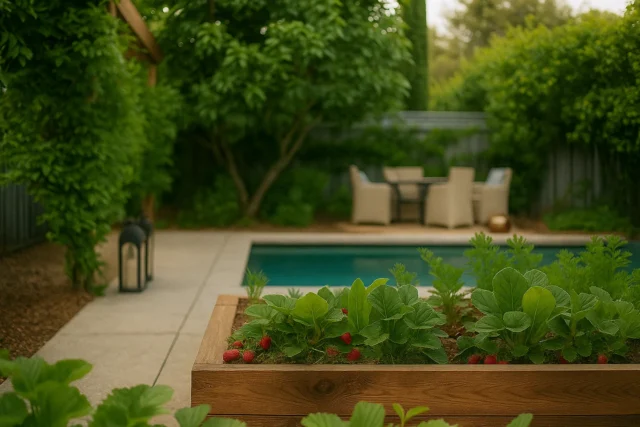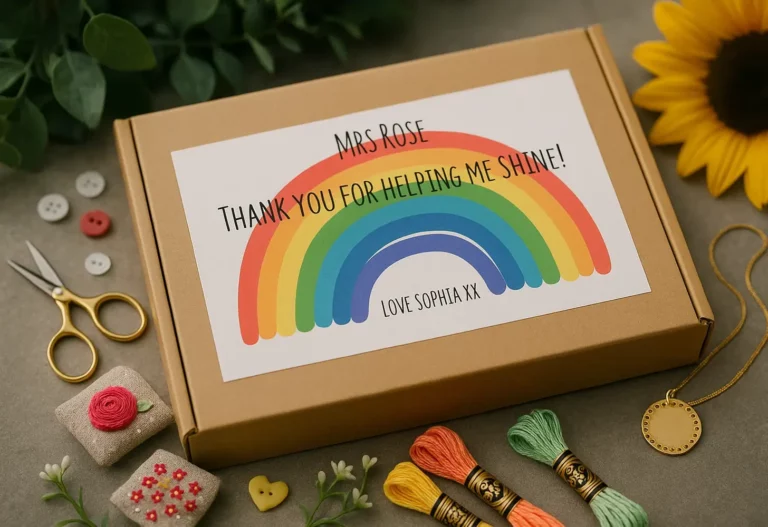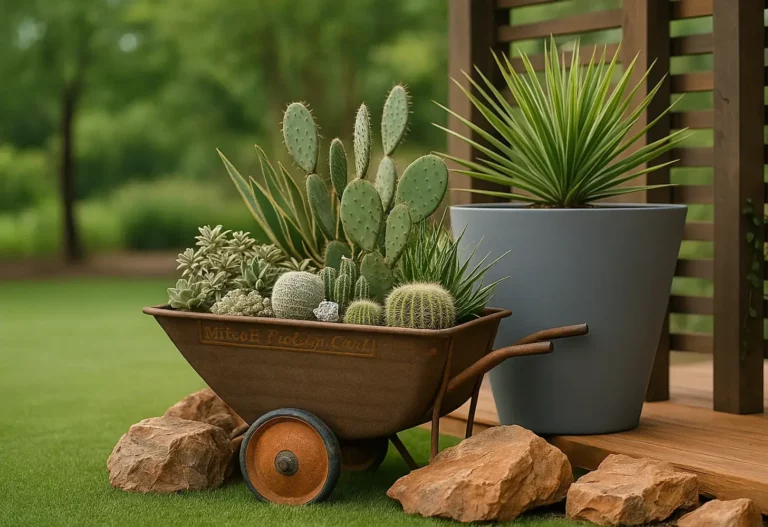When you’re starting a cut flower garden, having the right tools and supplies can make all the difference in your gardening success.
Table of Contents
ToggleBegin with essential tools like high-quality hand pruners for precise cuts and a soil test kit to check nutrient levels. A watering can guarantees consistent moisture, crucial for healthy flowers.
High-quality hand pruners and a soil test kit are essential for precise cuts and optimal flower growth.
Use garden stakes to support tall varieties like sunflowers, and apply mulch to retain soil moisture and reduce weeds.
These gardening tips will help you create a flourishing garden. Remember, the right supplies make growing a beautiful array of flower varieties an enjoyable and rewarding experience!

Selecting the Ideal Location for Planting
To guarantee your cut flowers thrive, start by selecting a spot that gets at least 6 to 8 hours of direct sunlight every day, as this is essential for their growth and blooming.
Check that the soil drains well to prevent water from sitting around the roots, which can cause problems like root rot.
Assess Sunlight Conditions
Have you ever wondered how to find the perfect spot in your garden for planting cut flowers? Successful growing begins with understanding your garden’s sunlight conditions. Most cut flowers need full sun, meaning they require 6 to 8 hours of sunlight daily.
To guarantee your flowers thrive, follow these tips:
- Observe: Check which areas get the most sun, especially during peak summer.
- Position: Plant tall flowers to the north to avoid shading shorter ones.
- Enhance: Use reflective surfaces like light-colored fences to boost light in shaded spots.
- Consider: Ensure good airflow to protect delicate blooms from strong winds.
Evaluate Soil Quality
Now that you’ve figured out the sunny spots in your garden, it’s time to dig a little deeper, literally!
Start by doing a soil test to check pH and nutrient levels; most cut flowers thrive with a pH between 6.0 and 7.0. Aim for rich, well-draining soil to promote strong root development and avoid waterlogging.
Mix in organic matter like compost to boost moisture retention and add nutrients. Avoid areas with heavy clay or rocky soil—consider using raised beds if needed.
Verify your location gets 6 to 8 hours of sunlight daily for the best blooming potential.
Happy planting!

Preparing Soil for Optimal Flower Growth
To prepare your soil for vibrant flower growth, start by conducting a soil test to check pH and nutrient levels, aiming for a pH between 6.0 and 7.0 for most flowers.
Enrich the soil with organic matter like compost or leaf mold, which helps improve its structure, moisture retention, and drainage.
Don’t forget to mix in organic fertilizers or fish compost annually, as these will supply the essential nutrients needed for strong roots and abundant blooms.
Rich, Well-Draining Soil
Creating a thriving cut flower garden starts with preparing rich, well-draining soil, and it’s easier than you might think!
Begin by enriching your soil with organic matter like compost or well-rotted manure to boost nutrient levels and moisture retention. Conduct a soil test to check pH and nutrient levels, aiming for a pH of 6.0 to 7.0.
Here’s a quick guide:
- Confirm good drainage by adding sand or perlite, preventing root rot.
- Loosen soil to at least 12 inches deep for ideal root development.
- Use mulch to regulate temperature and suppress weeds.
- Regularly check drainage to maintain healthy plants.

Organic Fertilizer Essentials
After ensuring your soil is rich and well-draining, the next step to nurturing a thriving cut flower garden is understanding the importance of organic fertilizers.
Organic fertilizers, like compost and fish emulsion, supply essential nutrients that boost flower growth. Regular application every 2 to 4 weeks during the growing season promotes healthy blooms.
Incorporating organic matter, such as leaf mold, enhances moisture retention. Start with soil testing to identify any nutrient deficiencies, allowing you to tailor your approach for vibrant blooms.
Annually adding fish compost enriches the soil with nitrogen and trace minerals, ensuring your cut flower gardens flourish.
Choosing Easy-to-Grow Flower Varieties
When you’re starting your cut flower garden, choosing easy-to-grow flower varieties can make the whole process more enjoyable and rewarding. Consider these vibrant options:
- Zinnias: Perfect for beginner gardeners, these annual flowers grow fast and bloom all summer in various vibrant colors.
- Cosmos: Resilient and whimsical, they thrive in sun or partial shade, with deadheading encouraging a continuous supply.
- Sunflowers: Easy to cultivate in full sun, they offer succession planting for extended blooms.
- Sweet peas: Known for a lovely scent, plant them in late winter or early spring for beautiful colors.
Mix in perennials like dahlias for stunning, plentiful flowers.

Planting Techniques for Beginner Gardeners
To make your cut flower garden a blooming success, start by preparing the soil with good drainage and plenty of organic matter. Most cut flowers for beginners thrive in rich, well-draining soil.
Try direct sowing flower seeds like zinnias, cosmos, and sunflowers after the last frost; these are great for beginner gardeners. Use succession planting by sowing every two weeks for a continuous bloom.
Follow spacing guidelines—typically 9 inches apart—to guarantee sunlight and airflow. For weed suppression, consider landscape fabric; it helps maintain spacing and simplifies planting.
With these planting techniques, your garden will flourish beautifully!
Maintaining and Caring for Your Flower Garden
Caring for your flower garden is both rewarding and essential to guarantee your blooms thrive throughout the season. Regular maintenance will make certain your cut flowers enjoy healthy growth and abundant blooms.
Here’s how you can achieve that:
- Fertilize: Use organic options like liquid fish fertilizer every 2-4 weeks.
- Watering Techniques: Apply drip irrigation or water at the base in the evening.
- Succession Planting: Sow seeds at intervals for continuous blooming.
- Protect from Pests and Diseases: Ensure good air circulation and use companion planting.
Additionally, support tall flowers like dahlias with staking, and keep your garden thriving and beautiful!

Harvesting Techniques for Long-Lasting Blooms
As you nurture your flower garden, the anticipation of harvesting your blooms for vibrant arrangements is a rewarding part of the journey.
To guarantee your cut flowers have a long vase life, harvest flowers in the morning for maximum freshness. Use sharp, clean tools to make angled cuts, which help with water uptake. Always remove leaves below the waterline to prevent rot.
Harvest flowers in the morning with sharp tools and remove submerged leaves to ensure longevity.
Place the flowers immediately in cool water to maintain hygiene and hydration. Harvest at their ideal stage—like zinnias fully open or sunflowers just blooming.
These steps guarantee your flowers stay fresh when arranging flowers at home.














